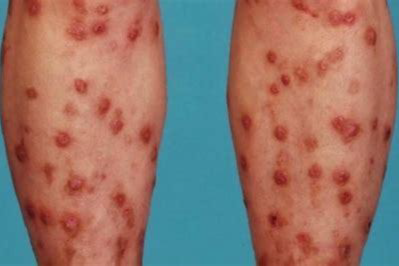Exploring the Unique Characteristics of Atopic Dermatitis (AD) and Prurigo Nodularis (PN)
Explore the distinct clinical manifestations of Atopic Dermatitis (AD) and Prurigo Nodularis (PN), their impact on patients' lives, and the common thread of type 2 inflammation. Understand how these chronic skin conditions differ and intersect in this comprehensive overview.

Introduction
- How do AD and PN differ in their clinical manifestations?
- What makes these chronic inflammatory diseases distinct?
- Despite their differences, how do shared pathways like type 2 inflammation unite AD and PN?
Diverging Paths: The different Clinical Manifestations of AD and PN
AD is characterized by recurrent eczematous lesions and intense chronic itch, with a notable skin barrier dysfunction1,2. PN presents with distinct papulonodular lesions, often displaying neurogenic inflammation3. While AD is widely recognized for its remitting and relapsing nature of clearance and flare-ups, PN is known for its severe symptoms like pain and scarring4,5.


The Burden of Disease: Profound Impacts of AD and PN
AD significantly affects quality of life, often leading to psychological distress and social stigma6. Conversely, PN patients frequently report pain, burning, and the distressing appearance of lesions7. Both diseases can have profound impacts on mental and physical health, although the specifics of these impacts vary considerably7,8.
A Common Thread: The Role of Type 2 Inflammation in AD and PN
Both AD and PN are driven by type 2 inflammation, with IL-4 and IL-13 playing significant roles9. These cytokines contribute to chronic itch and disrupted skin barrier function in AD and to nodular skin changes and scarring in PN2,9. Understanding these shared inflammatory pathways is crucial for developing targeted therapies9.

Conclusion
The exploration of AD and PN reveals distinct clinical paths united by type 2 inflammation. Understanding these diseases in depth is crucial for healthcare professionals aiming to optimize patient care. The differences and similarities between AD and PN highlight the complexity and the need for targeted therapeutic approaches9.
Referenser
-
Weidinger S, et al. Nat Rev Dis Primers. 2018;4(1)
-
Beck LA et al. JID lnnov. 2022;2(5):100131
-
Kwon CD, et al. Medicines (Basel). 2019 Sep 26;6(4):97
-
Davis DM, et al. Semin Cutan Med Surg. 2017;36(3):95-99
-
Elmariah Set al. J Am Acad Dermatol. 2021;84:747-760
-
Paller AS et al. Am J Clin Dermatol. 2020;21:119-131
-
Aggarwal P, et al. .Clin Exp Dermatol .2021;46(7):1277-1284
-
Chiesa-FuxenchZC, et al. J Invest Dermatol .2019; 139(3): 583-590
-
lngrasci Get al. Exp Dermatol. 2021;30:1208-1217




